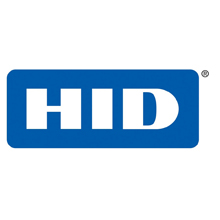 |
| HID Global will demonstrate its advanced RFID transponders for a wide range of applications at Euro ID 2012 |
HID Global will demonstrate its advanced RFID transponders for a wide range of applications in Booth #312 in Messe Berlin Exhibit Hall 2.1 from April 24-26. Innovative HID tag designs span from low frequency to high frequency to UHF, providing customers a highly differentiated set of solutions that meet the broad array of today’s asset tracking and identification requirements. Key demonstrations of the company’s recent RFID tag innovations include:
InLine Tag™ Ultra: The most advanced general-purpose UHF tags available, these tags employ a patented HID Global 3D antenna that enables read ranges of up to a 26 ft (8 m) with no line-of-sight on any material, substantially improving data collection speed and accuracy for global logistics applications.
SlimFlex™ Tag: Unique, flexible thermoplastic elastomer (TPE) housings enable secure mounting of UHF tags on contoured or irregular surfaces, while maintaining excellent RFID performance characteristics, even under harsh conditions.
IronTag®: Originally developed for tracking aircraft parts, this UHF tag performs when attached to metal objects and withstands temperatures to 356° F (180° C), making it ideal for tagging tools, metal components, factory machinery and heavy equipment.
Glass Tag Ultra: Encapsulated in moisture-proof glass, theses transponders employ a patented direct bonding technology to provide greater read-range performance than any LF tags of comparable size, and a generous 512 bits of read-write memory.
With fast data rate communication and a variety of housings to suit unique environmental requirements, HID’s broad portfolio underscores the ability for RFID technology to be implemented in ever-wider applications, vastly improving the speed and accuracy of logistics and asset tracking around the world.
HID Global presentation during conference session at Euro ID:
“Weapons tracking with RFID at Australian Customs” – Daniel Diefenbach, sales manager, Identification Technologies, DACH with HID Global will address how HID tags helped Australian customs to optimize lifecycle and inventory accuracy of weapons, apparel and safety equipment during a conference User Forum on Wednesday, April 26, 2012 from 11:30 a.m. - 12:00 p.m.


















